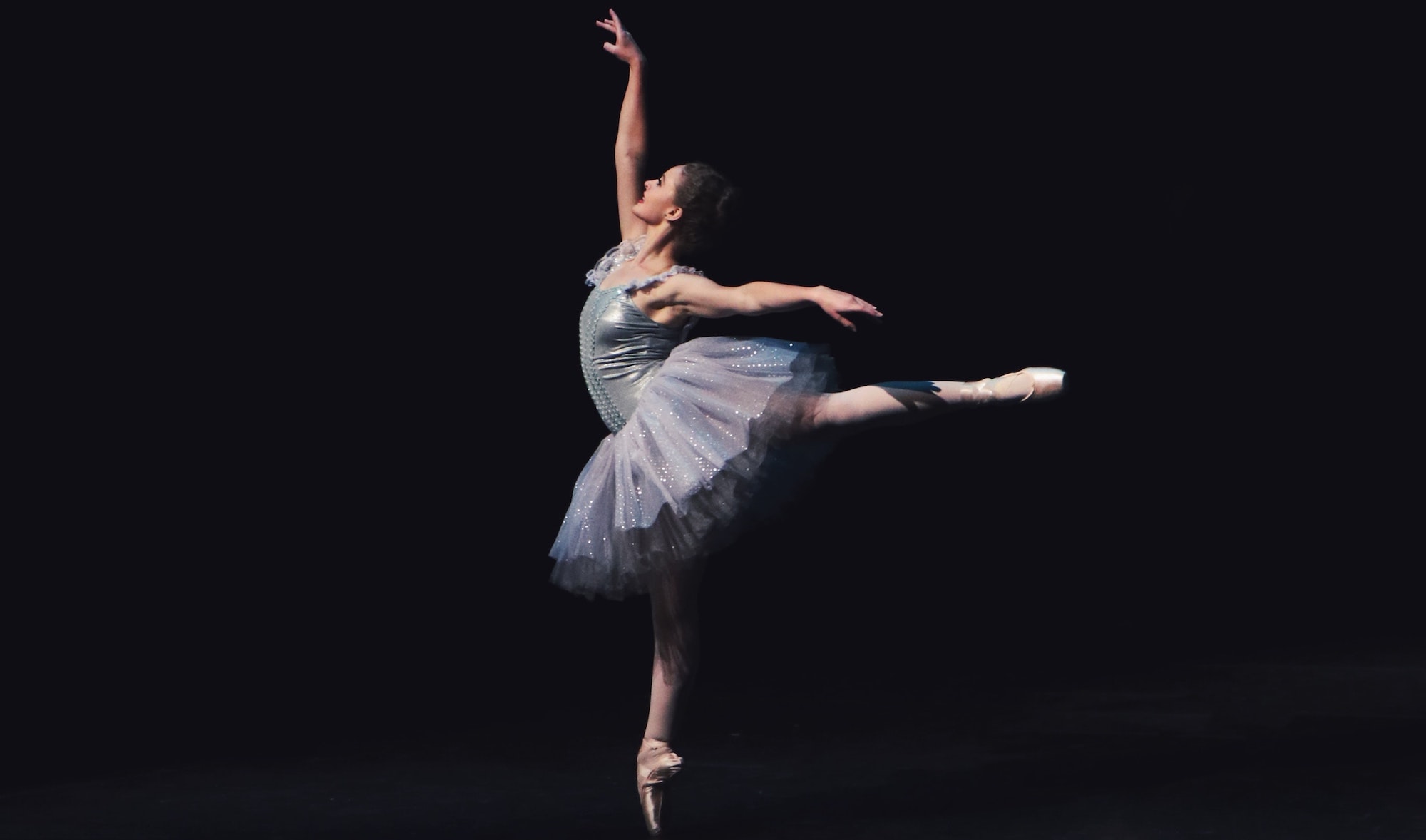
14 Nov Ballet Foundations: Arabesque
One of the most recognizable steps in classical ballet vocabulary, the arabesque is a gorgeous position where the body is supported on one leg, with the other leg extended directly behind the body with a straight knee. Depending on the context (barre, center, or choreography), the standing leg can be straight or in plie, but the back leg must always be straight. Arabesque can be found in almost every aspect of ballet, both contemporary and classical, as well as other dance forms. Something you probably didn’t know is that arabesque can be done with the back leg either on the ground (a terre) or raised in the air (en l’air).
How to do an Arabesque
- Step 1: Start standing in first position with your toes pointing outward and heels touching. Keep your legs straight and rotated outward at the hip. Keep your arms relaxed position in front of you, slightly rounded with your fingers a few inches apart. Hold your back tall and straight.
- Step 2: Extend one leg straight behind you with your pointed foot on the ground, making sure you continue to rotate outward through your hip. Raise both arms to the sides, parallel to the floor. Move the same arm as your standing leg forward in front of your body. Keep both arms straight with palms facing down.
- Step 3: Raise your extended back leg, keeping your spine long. Be sure to engage your core while lifting your leg to help strengthen the pose and keep your back straight. Make sure both legs stay completely straightened but be careful not to hyperextend.
Arabesque Positions
Arabesque has several different versions, all defined by the position of the dancer’s arms. The one constant is that the dancer must have a straight leg directly behind them, or it is not an arabesque. The different positions that can be done are first arabesque, second arabesque, or third arabesque.
- First Arabesque: First arabesque is when a dancer in arabesque has the arm that is on the same side as the supporting leg extended out in front of their body, with the other arm extended side or towards the diagonal back.
- Second Arabesque: Second arabesque is when a dancer in arabesque has the arm that is on the same side as the back leg extended out in front of their body, with the arm on the side of the supporting leg to the side or diagonal back.
- Third Arabesque: Third arabesque is when a dancer in arabesque now has both arms extended in front of the body, with the arm on the same side as the supporting leg slightly higher than the other so the hand is anywhere between the top of their head to a foot above their head. The arm on the side of the leg in arabesque should never move higher than the shoulders.
Heights of the Leg in Arabesque
An arabesque can be done at almost any height where the back foot is off the floor. Higher does not mean better! Past 90 degrees, many dancers begin to sacrifice quality for extra height by opening their hips toward the side.
- Low: Sometimes a teacher or choreographer may ask for a dancer to do a “low arabesque.” This usually means around 20 degrees. Much lower, and the step may not show well from a distance.
- 45-Degrees: A very common height, a 45-degree arabesque is quite common in variations, quick, and slow movement. Since 45 degrees is just half of 90 (in the middle between directly horizontal and directly vertical), it is easier for dancers to know where that height is since it’s an actual measure and not just a description. This also makes for smoother corps work.
- 90-Degrees: The next height typical for arabesques doubles straight to 90 degrees. There isn’t much in between because it doesn’t look deliberate enough. Slightly below 90, and it may look like the dancer can’t get an arabesque to 90. This height is often considered the “target” arabesque for many reasons.
- Over 90-Degrees: Past 90 degrees in an arabesque is common too, but is often reserved when a dancer is featured alone or for the ballerina with her partner. Because an arabesque gets considerably harder to do correctly past 90 due to average limitation in hips, asking an entire corps to hit a certain degree above 90 is asking for trouble!
Arabesque Modifications
- Arabesque for Prenatal: Balance is key for prenatal ballet. Hold onto a barre or wall for support and only raise your leg a few inches off the floor.
- Arabesque for Beginners: If you’re just starting with ballet, hold onto a barre or other sturdy surface for balance. Only lift your back leg a few inches, hovering your toes just above the floor. A low, properly positioned extension is much better for your body than a high, improperly positioned one.
- Arabesque for Weak Lower Back: Ease pressure off your lower back by only lifting your raised leg a few inches. Be sure to engage your core to remain steady during this move.
- Arabesque for Weak Knees: An arabesque requires straight legs with no bend in the knee. You can help to support your knees by building strength and working up slowly to a lifted leg in this position.
- Arabesque for Tight Hips: This extension does not require a high lift in the leg. Aim for just a few inches as your hips allow.
Quality of Your Arabesque
No matter if in class or on stage, a ballet dancer should never forget the basic technique for an arabesque, which should always include turned out and straight legs. Every dancer, especially advanced, knows their “maximum arabesque” height where quality isn’t sacrificed. Pay close attention to your patterns in class and ask your teacher for recommendations if you feel like your leg height, core position, feet position and hip placement need any improvement.
